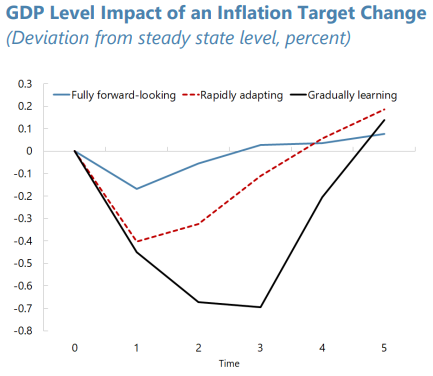Projecting government revenue and expenditure is hard. But it is useful to review budget forecast errors to understand their drivers to help improve the accuracy of projections. National Treasury overestimated government revenue consistently between 2010 and 2020, with the forecast error of the revenue-to-GDP ratio (budgeted less actual as a percentage of GDP) averaging over 2 percentage points for 1 and 2 year-ahead projections, and over 1.5 percentage points for 3 year-ahead projections. Spending was also consistently overestimated, with government under-spending relative to budgets. Expenditure-to-GDP forecast errors averaged over 2.5 percentage points for 1, 2 percentage points for 2 year-ahead projections, and over 1 percentage point for 3 year-ahead projections. Recent forecast errors were much smaller with the unexpected impacts of the COVID pandemic and can only be evaluated for 1 year-ahead forecasts as the 2022/23 fiscal year is the last available GDP vintage.
The overall impact of these forecast errors on the Treasury’s overall budget balance projections has been a slightly pessimistic bias for the budgets between 2010 and 2015, with overall and primary budget balances projected to be more negative as a ratio to GDP than what Treasury now estimates to have occurred. The 2016 to 2019 budgets saw positive forecast errors (smaller than actual budget deficits to GDP), with larger errors for the final medium-term projections. The COVID pandemic created worse-than-expected budget balance outcomes for budgets from 2020 onwards.




Note that these forecast errors are based on 2023 Budget estimates of historical budget outcomes, which have been revised substantially owing to revisions to GDP. Forecast errors of revenue and expenditure to GDP were smaller before the upward GDP revisions, but they are also smaller as a proportion of revenue and expenditure. The 2009/10 one year-ahead forecast error of revenue to GDP is over 4 percentage points, but 1.5 percent of the 2022/23 Budget’s revised expenditure figure for 2010/11. Had the 2009/10 one year-ahead forecast error been calculated in 2016/17, by way of example, the error would have been 1.2 percentage points lower as a ratio of GDP.

